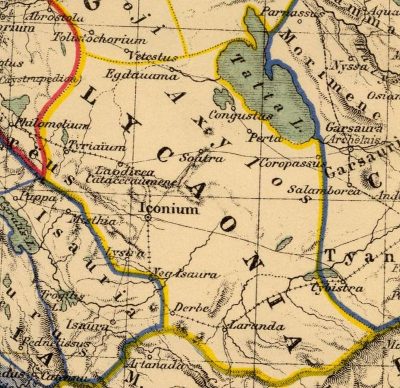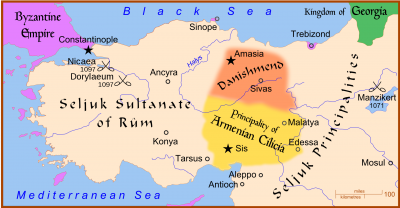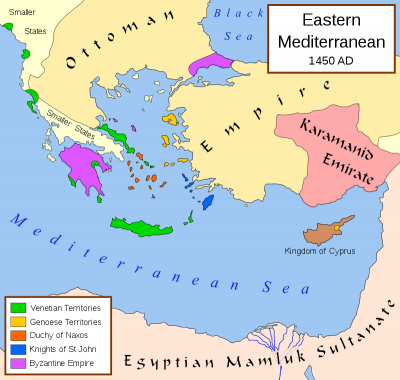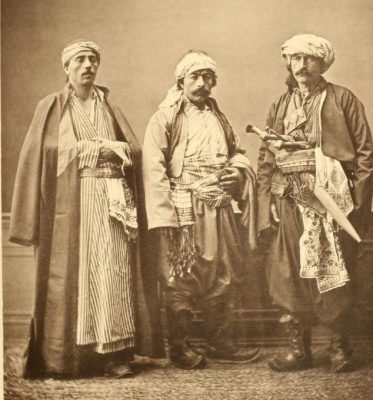Toponym
The former toponym Larende derives from ancient Greek Laranda (Λάρανδα), which in turn comes from the Luwian language Larawanda,
literally ‘a sandy place’.
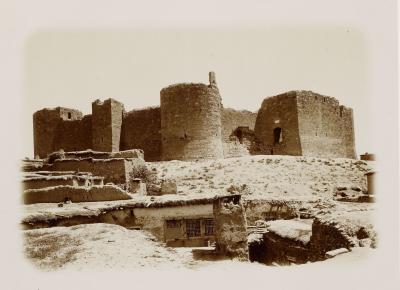
History
In the 6th century B.C. Laranda in Lycaonia came under Achaemenid rule until 322 B.C., when it was destroyed by Perdiccas, a former general of Alexander the Great, after he had defeated Ariarathes, king of Cappadocia. It later became a seat of Isaurian pirates. At some point it was possessed by Antipater of Derbe. It belonged to the Roman and later Byzantine Empire until it was captured by the Seljuks in the early 12th century.
During the Eastern Roman rule, the city was considered an important garrison city against the Islamic expansionist moves. In 1165 the Seljuks conquered the city, which was taken from them again during the Third Crusade in 1190 by Frederick Barbarossa and by the Armenian Kingdom of Cilicia between 1211 and 1216.
In 1256, the town was taken by Karamanoğlu Mehmet Bey and was renamed Karaman in his honour. From 1275, Karaman was the capital of the Karamanid beylik. Larende then took the name of Karaman in honor of this dynasty and was used as the capital of the principality from 1256 until the 14th century. In 1397, the Ottoman Sultan Bayezid I captured the city, but was so significantly weakened by Timur’s forces that the Karamanids managed to recapture it. In 1466 or 1468, Larende was conquered by the Ottomans and, after a few years, the Karamanid beylik was finally crushed. In 1483 the capital of the province was moved to Konya.
The Ottoman conquest was followed by a period of economic decline, which, however, ended again with the conquest of Cyprus by the Ottomans, as Karaman was conveniently positioned near the Silk Road and close to the port at Silifke.
The Karamanids were Cappadocian Turkomans who fought the Ottomans on the side of the Comnenes, became Christian and migrated westwards. The Greek name Karamanlis as well as other surnames beginning with Karaman refer to this town.
Destruction
The approximately one thousand Armenians of the kaza of Karaman were persecuted since the end of May 1915.
“(…) the houses of Karaman’s Armenians were subject to police searches on Sunday, 23 May 1915, and a number of men were arrested. The operation was organized and overseen by the local Unionist club, which was under the control of the mayor, Çerkez [Circassian] Ahmedoğlu Rifat, Helvazade Haci Bekir, and Hadimlizade Enver. An enormous bribe paid put to the Young Turks nevertheless made it possible to limit the number of men who were ‘sent away’. The veritable deportation of the Armenian population was not set in motion until 11 August 1915. The convoy took the Ereğli-Taurus-Osmaniye-Karma-Aleppo route and eventually reached Meskene in the Syrian Desert. Armenian property in Karaman was pillaged immediately after the deportees’ departure.”[1]
